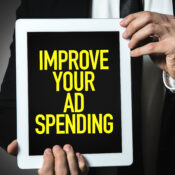/
/
Mudd Insights | An Analysis of Advertising Analysis
Picture it. Spring, 1977. Color TV, all 3 channels of it. No remote. I have to imagine it too, because though it was me, it’s loosely based on facts presented by my parents who only observed my behavior.
To the point, I apparently did not care for television programs as a toddler. As it’s been told and told again, I loved the commercials. I was perfectly content in my imagination with toys, but when the television cut to the commercials, I would innately drop everything, run up to the unsafe viewing distance of the screen and dance/act out the spots. Then, like clockwork, leave and return to my toys once the real show resumed.
I believe it. I believe that overstated, repetitive “parent story” because I truly have no recollection of the day or moment that I wanted to be in advertising or create art and overachieve. All I can recall are memories that reinforce it is what I want to do.
Looking back, the patterns were all there. In kindergarten I remember I had to draw a story with the letter “F”. While my classmates were making frogs and flags I wanted something more. I remember it so clearly - Fred Flintstone Fixes Fine Food.
Fifth grade was my first storyboard – for Doritos. Eighth grade English had a section on influence writing, and we studied writing styles of advertising. I would sit and test myself.
By 19 it was college internship time, and I began writing radio copy and applying technique. When I didn’t have a client to write for, I made them up. I created spoof ads.
The reason I’m setting up with all of these examples is because now, 35 years in, I can’t help but ask myself if it’s cool or scary.
Now I go over every single frame and listen to the scripts being said, and analyze how they might have set up that shot, who wrote it, why it works or how it could be better. It goes on and on. It won’t shut off. Even when I want it to. Those details!
I study the commercial pods and can habitually decipher whether it’s local or national, free of any competitive separation and accurately targeted for the demographic of the program. Too often I think spots get placed on a network that may fit their demo, but during specific programs that may not. For instance, AMC may seem like the right network to run your Polident with Scope ad for 60+, but it should be on the weeknights when the classics are played, not on Sundays when the original series shows run like “Breaking Bad.” Some networks have specific demos for specific nights. The diversification even within dayparts of networks is evolving. You have to watch those details and variables.
I also try to indentify when spots use large budgets with spokespersons or celebrity voice-overs and imagine their budget, both creative and media spend. I will see one, like this Lexus ad with Inception-esque road bending.
[youtube]http://www.youtube.com/watch?v=skcrMQ_RWPs&feature=pyv&ad=7313273052&kw=new%20lexus%20commercial[/youtube]
It’s at least a 2mil spot, and I’ve already seen it on at least four cable networks and national broadcast. It’s clearly been on 2-3 dayparts and I am not their demo. They either negotiated autofill (free rotation in unused inventory space) or had such a large media buy they were given the extra space as a value add bonus. Or maybe because Inception was so last year, they fill it wherever until they get new creative. And yes, that’s how I can spend my Friday night.
One commercial that is my right now absolute favorite piece of art is the Sherwin Williams ad with the hot air balloons.
[youtube]http://www.youtube.com/watch?v=mdwWz5HQ6WA[/youtube]
To captivate me with music and art and not say a word truly breaks through my clutter. The animation is not what I understand. The music choice was spot-on perfect. The usage of colors and concepts of the paint swatches was creative and with the tiniest details - this creative director did not just try to get it done, they passionately owned it.
Is this a good thing? Am I so biased, so conditioned, so desensitized that I’ve created a numbness of difficult amusement for myself? I cannot watch TV, search online, drive my car, walk down the street or even have a normal conversation with someone – without observing the messages and deciphering the motivation for consumption objectives. Is this clearly a life of torture or would it be considered personal professional development in my career?
Can a plastic surgeon walk into a crowded room and only see people? Or do they see every single nip and tuck they wish they could make? What about an interior designer? Can they walk into a house and just sit in it, or do they figure out every single element pulled together to accomplish the look?
If I could mindlessly escape and observe without bias or thought, would it go against the entire profession I feel born to obsess about? When I see something well executed, I don’t just accept it – I analyze it too much.
Recent Posts
Mudd Advertising
Let’s leverage!
Mudd Advertising
Politics Schmolitics!
Mudd Advertising
Mudd has been promoted to Google Premier Partner
All Categories
Tags
anonymous website visitor identification
automotive
branding
cable
case study
chevrolet
chevy
data
digital marketing
direct marketing
display
dynamic inventory display
facebook
first party
google
google analytics
google premier partner
internet marketing
local seo
Matthew Moody
media
mobile search
mobile seo
MUDDid
online marketing
online video
organic
organic search
pay per click
political
ppc
promotion
retargeting
search engine marketing
search engine optimization
sem
seo
social advertising
social media
social media marketing
strategy
traditional marketing
traditional media
Volunteer Spotlight
youtube




